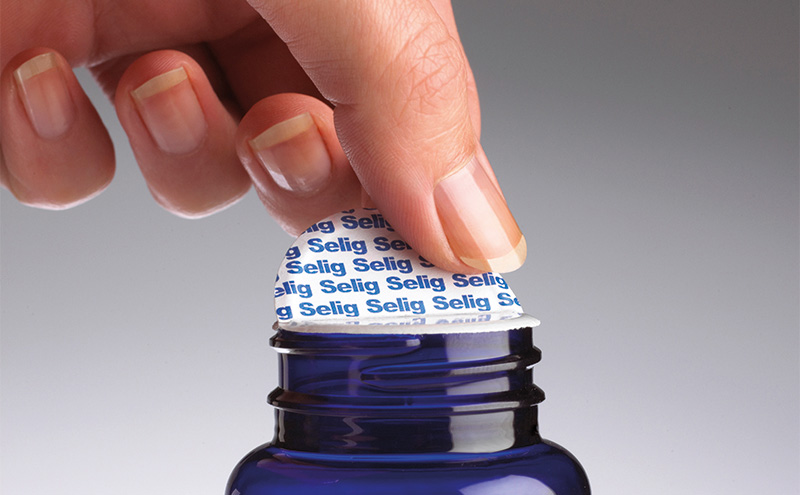Products with high oil/fat content pose special problems when tamper evident seals are applied to their containers – no more so than when these seals are applied to glass containers. Selig sales manager Markus Wilden discusses the problem and offers a solution.
CONSUMERS expect food packaging to maintain product integrity, prevent losses due to spillages, provide a reliable form of tamper-proofing and, should the packaging have been breached, provide some visible evidence of tampering. Moreover, with ageing populations and the needs of certain sections of the population with limited strength or dexterity, there is growing demand for packaging closure seals that are also easily removable while providing that all-important product protection and tamper evidence.
Many types of packaged foodstuffs are sealed using tamper-evident induction heated foils, but where the packaged foodstuffs contain a high level of oil or fat, such as cooking oils, peanut butter and the like, there are additional packaging challenges – particularly so when these products are packed into containers made from glass, which, due to its inert characteristics, continues to be the packaging medium of choice for these types of products.
Induction sealing is widely used with plastic containers, where the low level of heat generated during the induction process is sufficient to fuse the foil and plastic container neck together. And while low weight polyethylene terephthalate (PET) is becoming increasingly popular as a container material for fatty foodstuffs like cooking oil, thanks to its greater compatibility with these products compared with other plastic materials, glass does remain the preferred packaging medium for high oil/fat content foods, largely as a result of its superior gas impermeability and its ability to store product for far longer than is possible in an equivalent plastic container.
Hitherto, food processors have been unable to guarantee a truly hermetic and airtight seal around the rim of glass containers containing high fat content foodstuffs using induction heated liners because good adhesion has traditionally been difficult to achieve. This is partly due to glass being a difficult substrate to adhere to – a condition made more problematical in the presence of fats which have the ability to penetrate and degrade adhesive bonds. The usual practice is to seal such high fat/oil content containers with steam-applied metal caps, which are difficult to remove by hand – particularly so by people with low grip strength.
A foil liner on the other hand is a lower cost alternative and much easier to open, but the materials of construction of such liners are closely regulated. FCM regulation EC 10/2011 (Annex I, Table 1), for example, states that petroleum based or synthetic hydrocarbon derived waxes (which are frequently used in induction heat sealed liner laminates for glass) must not be used for articles in contact with fatty foods. Fortunately, a new development in induction heat sealed lining is able to overcome these issues.
Selig’s new proprietary Deltaseal 9000 formulation, which was officially launched at Interpack 2017, not only increases adhesion to glass but also improves adhesion in an oil environment, resisting oil penetration better than any other packaging seal on the market.
A lower cost alternative to steam-applied metal caps as well as being much easier to open, Deltaseal 9000 is also fully compliant with FCM regulation EC 10/2011.
The new lining material consists of an aluminium foil coated with a heat seal polymer layer, laminated to a white lined folding box board backing material. The lining material, when inserted into the closure, is applied to the container and sealed using a conventional induction heat sealing system appropriately configured for line speeds.
The closure retains the liner material behind a retention bead while allowing it to rotate freely. On opening, the seal gives an audible ‘crack’ as the materials separate, leaving a clean, attractive foil on the container and a secondary reseal liner or wad in the cap that ensures no risk of debris contamination and provides a level of re-seal once the foil has been removed from the neck of the jar.
Applying the convenience and reliability of induction heat sealed foil technology to glass containers – particularly when they contain high oil/fat content foodstuffs – has been difficult, if not impossible to achieve and the industry has had to resort to more expensive, less consumer-friendly forms of closure.
Now, with technical advances such as Selig’s Deltaseal 9000 opening up new possibilities for glass container sealing, product integrity of high oil or fat content foods are more easily maintained and consumers can rest assured that long shelf-life along with that all-important tamper-proofing are built in from day one.















